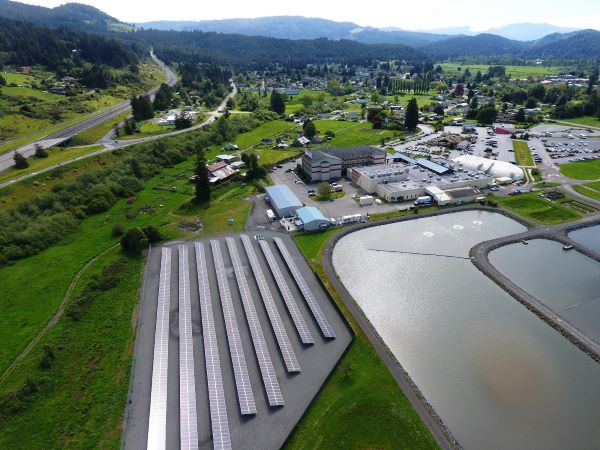Empowering Students to Design Tomorrow's Microgrids Today
By Billie Huervas, The Energy Coalition
Picture this: your students are not just learning about energy systems but actively leading the charge toward a sustainable future.
Energy is Everything’s 9-12th grade workshop, Teach Your Students to Become Smart-Energy Managers on Campus, covers the United States’ energy system, energy resilience, and transition toward decentralized energy generation. With this, educators can design a classroom experience that encourages students to think like energy managers.
United States Energy System
Our current electrical system involves large-scale centralized electricity generation, allowing businesses, homes, and other buildings to rely on a single power source. We can break down energy transfer through the electric grid into several steps:

Generation
- Power stations harvest the energy from sources that generate electricity
- Transformers stations transfer electric energy from one alternating-current circuit to one or more circuits
Transmission
- Transmission lines transport high-voltage electricity from power plants to substations over long distances
- Substations transform electricity to a higher or lower voltage
Distribution
- Distribution lines (aka power lines) transport lower voltage electricity from substations to end users
The diagram above shows that electricity is transmitted over long distances to consumers through distribution lines. However, this interconnection has a design flaw. In the case of natural disasters or repairs needed to the system, the entire grid can lose its power and leave communities without electricity
Powering Up Energy Resilience
Conversely, electricity generated within or near the community where it is used is called decentralized electricity generation. These are typically small-scale sources of energy that don’t rely on a centralized power plant.
Microgrids are a great example of this!
In the event of power outages, microgrids have the capability to “island” themselves, meaning they can disconnect from the main energy grid but still supply local electricity needs. This system works together with our existing centralized system and can work independently. Let’s take a look at a real-life microgrid:
Blue Lake Rancheria (BLR) Microgrid
- Located in Humboldt County, California
- Energy resilience was a severe concern to the community.
- Required collaborative efforts from the California Energy Commission, local public utilities, and private contractors.
The Blue Lake Rancheria (BLR) Microgrid utilizes smart technologies that monitor and manage energy generation, storage, and distribution. This advanced energy system allows microgrids to supply energy on demand, achieving the lowest energy prices from locally produced energy. Incorporating various energy sources ensures that the community has a consistent power supply even when the centralized grid is shut down. The primary energy sources include solar power, battery energy storage, and backup diesel generators.
*(Diesel generators provide backup power in case of extended cloudy or low-sunlight periods, ensuring a continuous energy supply during adverse weather conditions or emergencies).
BLR demonstrates a robust, renewable-based microgrid system, proving that supplying communities with reliable power can result in economic and environmental benefits, which include:
- Increased local employment
- Generous electricity cost savings
- Significantly decreased greenhouse gas emissions.
The Takeaway
Microgrids are a huge step in the right direction. However, there are a number of challenges that present themselves:
- State-controlled electricity markets hamper the development of decentralized energy systems since this encourages a number of communities to become their own power producers.
- Costly software and equipment are big barriers to setting up microgrids due to technological constraints preventing the integration of microgrids with the centralized power grid.
*Many microgrids operate on direct current while the electrical grid transmits electricity on alternating current. To accommodate these differences, huge investments must be made.
Hopefully, this inspires an interest in emerging technologies, innovation, ideas, and solutions. Teaching your students about centralized and decentralized energy systems equips them to participate in discussions about energy policy and allows them to make informed decisions based on complex challenges and opportunities!
Additional Resources
Powering the Microgrid - An Energy is Everything lesson PDF covering centralized and decentralized energy generation, energy resiliency, and microgrids.
CA Electric Infrastructure GIS Map - Explore power plants, transmission lines, and substations all over California.
CA Transmission Lines GIS Map - Detailed map of transmission lines that includes data on status, electric capacity, and if it’s overhead, underground, or underwater.
About the Author

Billie is a Senior Project Coordinator at The Energy Coalition and supports the organization's marketing and outreach efforts. She has three years of experience with design and digital communications, focusing on energy and sustainability. Billie holds a B.A. in Business Economics from the University of California, Irvine. You can catch her gardening, cooking, or watching a documentary in her spare time!






